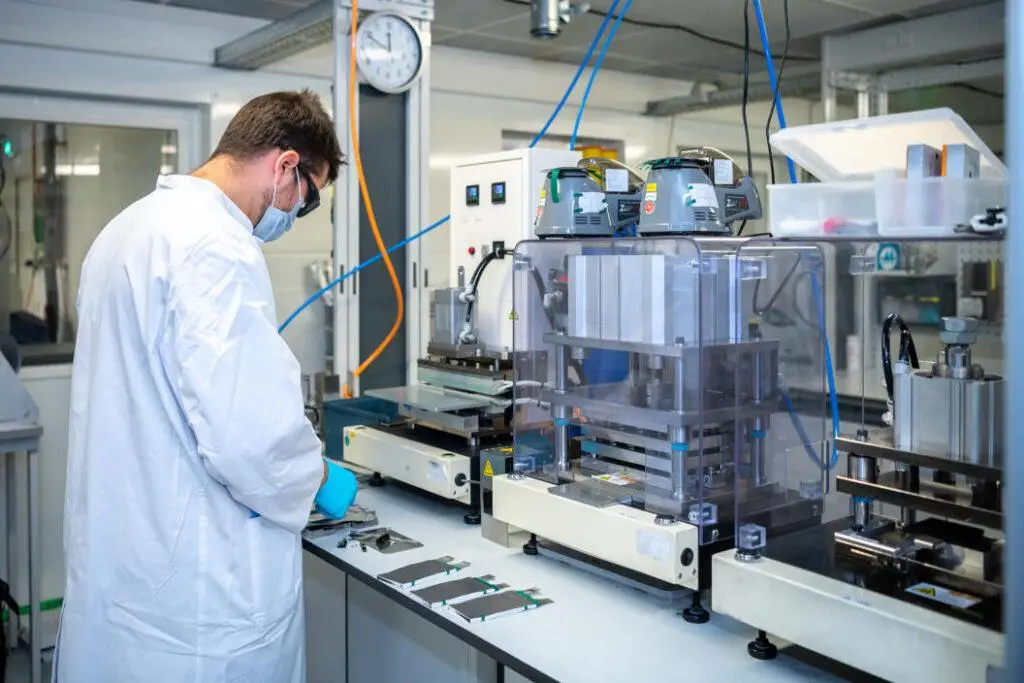Gas evolution is a known aging mechanism in lithium-ion batteries, occurring during both formation and cycling under harsh conditions such as elevated temperatures of 60 °C. When gas remains between electrode layers, it increases resistance and causes irreversible lithium loss. Applying pressure can expel this gas from the electrode layers, minimizing detrimental effects. A team from the MEET Battery Research Center at the University of Münster has investigated in detail how pressure influences the performance and cycle life of lithium-ion batteries.
Previous studies have primarily focused on the impact of pressure on the long-term aging of battery cells, identifying both positive and negative effects depending on pressure level, cell type, and active material. “In our study, we explored the influence of pressure when applied only during formation rather than throughout the entire cycling process,” explains MEET scientist Kai Büscher. The researchers subjected various cell chemistries to cyclic aging at 20 °C and 60 °C under three different conditions: without pressure, with pressure only during formation, and with pressure during both formation and cyclic aging.
Key Findings
- Compression During Formation: Applying compression during formation increased the initial capacity and reduced capacity loss when gas evolution was present. However, it had no long-term effect on capacity loss during subsequent cycling without compression.
- Compression During Cycling: At 60 °C, where significant gassing occurred, continuous compression improved capacity retention by dissipating gas. At 20 °C, with minimal gas evolution, compression had no notable effect on performance.
- Gas Evolution Effects: Undissipated gas led to increased internal resistance and capacity loss, causing inhomogeneous aging and lithium plating. Mechanical compression helped push evolved gas into an extra pouch pocket, mitigating these negative effects.
- Compression Benefits: The positive effects of compression were significant only when gas evolution was substantial. Selective application of compression is a simple way to slow battery aging and enhance performance without new active materials or electrolytes.
- Electrolyte and Electrode Influence: Cells with the VC additive showed better capacity retention due to reduced gas evolution. SiOx-based negative electrodes had lower initial capacity but exhibited similar aging behavior under compression as graphite-based electrodes.
- Lithium Loss Mechanisms: Loss of Lithium Inventory (LLI) was the main contributor to capacity loss, influenced by electrolyte composition and negative electrode material. Compression did not significantly reduce LLI during cycling at both temperatures.
The team found that applying pressure positively affects battery performance and cycle life whenever gas develops during formation and/or cyclic aging. “It may be sufficient to apply pressure only during formation, as gas development often ceases during cycling under moderate conditions like 20 degrees Celsius,” says Büscher. Without gas development, pressure has no significant effect. “Selective application of pressure is a simple way to slow battery aging and enhance performance without the need for new active materials or electrolytes,” concludes the MEET researcher.
The full study by authors Kai Büscher, Dr. Bastian Heidrich, Dr. Philip Niehoff from the MEET Battery Research Center, and Prof. Dr. Martin Winter from both the MEET Battery Research Center and Helmholtz Institute Münster of Forschungszentrum Jülich, is available in the Journal of The Electrochemical Society.
Source: MEET – Münster Electrochemical Energy Technology, Journal of The Electrochemical Society
















